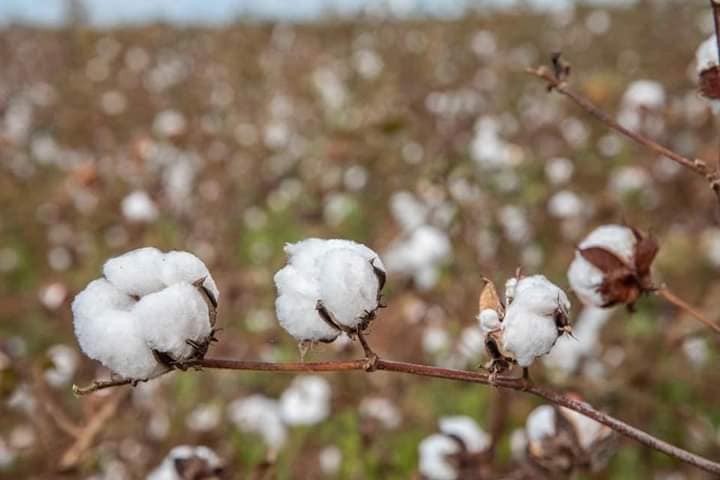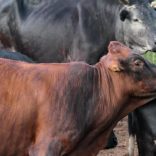Mozambique: Regadio 7 de Abril hampered by electricity debts
Mozambique: Time to focus on quality to compete with world’s top cotton producers – Ferreira dos Santos

File photo: MADER
Although its size is currently not very impactful on a global scale, in terms of production and consumption, cotton production in Mozambique has been showing clear signs of evolution over the last few years, although it is still confronted by numerous adverse factors, most evident of all, the instability caused by terrorist attacks in Cabo Delgado, a province with a history of cotton production.
Cotton cultivation has recently been seen as a safe bet, economically, due to the guaranteed market and the continuing improvement in the purchase price, which has encouraged several Mozambican producers to invest in it, despite the rise of new cash crops vying for the same space.
Speaking to Diário Económico (DE), the president of the Cotton Association of Mozambique (AMM), Francisco Ferreira dos Santos, looks at the challenges of this sub sector in the short and medium term and in perspective.
Where does the national cotton industry stand at this point in time?
It has an increasingly better level of organization. On the one hand, we see that it is more in line with the Government and partners, with excellent future prospects in the production of quality cotton, oils and even biodiesel, and contributing to the regeneration of ecosystems, integrating other food and cash crops into its production system.
On the other hand, there is a situation that requires a quick solution. We have one of the main cotton companies facing a crisis, due to various internal factors and some other circumstances, and this has a huge impact on thousands of producers and on the global numbers of the subsector.
What are the major challenges facing the industry in Mozambique today?
Right now, the main challenge is to find a solution to the situation in Cabo Delgado, which is a historical cotton region, and where cotton is the main source of livelihood for tens of thousands of families. Apart from that, the subsector has an ongoing program and must remain consistent in its evolutionary path in order to achieve the desired success.
As president of the Cotton Association of Mozambique, what is the strategy being followed to maximize cotton production in the country and, on the other hand, minimize the challenges you were talking about?
AAM’s strategy is framed in the global agenda and in the development goals of the United Nations. This strategy is based on three main pillars. The first is to implement integrated production systems, capable of regenerating ecosystems and contributing to the sequestration of atmospheric carbon, with organic production currently being studied. Then, the second also involves implementing technology to guarantee full traceability of the product, right up to the producer’s agricultural field. Finally, the third and last pillar is based on guaranteeing the full use of by-products, in particular oils, bagasse and soaps, including the production of biodiesel, in line with the Government’s programme.
How does the Association view the new cotton marketing tariff recently set by the Government?
The seed cotton price for the producer follows the international market and the exchange rate. This 2021/22 campaign had an extraordinary price, with cotton being one of the highest priced and most profitable crops in rural areas. Furthermore, being a drought-resistant crop, it was less affected than other crops by the atypical rainfall pattern of this campaign, which was essential to guarantee a minimum income for thousands of producing families.
How is Mozambican cotton positioned in terms of its competitiveness in international markets for this commodity?
One of Mozambique’s main challenges is having to compete in a market in unequal circumstances. Official data from relevant bodies, namely the International Cotton Consultative Committee (ICAC) show that around 70% of the cotton produced globally benefits from support or subsidies to its producers. This promotes global production, leads to an increase in supply and leads to a reduction in international prices, thus affecting countries that do not have the same capacity to intervene in the value chain.
These countries include all major producers without exception, including China, the US and India. For example, in the latter, a country with a production base similar to that of Mozambique, cotton benefits from strong producer support and is therefore one of the most profitable crops for Indian family farmers. West Africa has also been implementing similar policies, with extraordinary impact.
This support does not come from philanthropy. It arises only because it is justified, and because these economies are able to recover this investment in social impact, demographic stabilization and the value generated along the value chain.
For example, according to the same source, in 2019/2020, the United States of America (USA) alone provided almost US$2 billion in direct support to cotton producers. The USA does not even have a relevant textile industry, so we imagine that this return will be recovered in the seed, oil and bagasse industry, essential for animal production and human food.
Mozambique produces less than 1% of global cotton. It should invest more and more, in our opinion, on producing a quality product. In addition, it must continue to work on mechanisms that allow it to manage and compensate for market distortion caused by the main cotton-producing economies in the world.
In recent years, there has been talk of a deficit in terms of the cotton industry, namely in terms of processing units at national level. Is this a real problem or is the installed transformation capacity sufficient?
This is not a current issue. At the moment, Mozambique has sufficient and adapted industrial capacity, capable of responding to the growth program desired by the subsector.
By Hermenegildo Langa












Leave a Reply
Be the First to Comment!
You must be logged in to post a comment.
You must be logged in to post a comment.